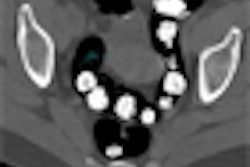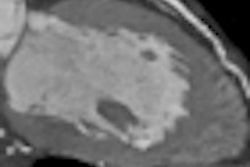The Virtual Colonoscopy Teaching Centre (VCTC), founded in Belgium in 2005, has expanded to the U.S. with assistance from the University of Arizona.
The goal of the center is to teach virtual colonoscopy (VC or CT colonography) online. The technique, which yields excellent results that have improved steadily in the 15 years since its introduction, nevertheless comes with a long learning curve.
Dr. Arnold Friedman from the University of Arizona in Tucson is collaborating on the training project with center founders Dr. Philippe Lefere and Dr. Stefaan Gryspeerdt from Stedelijk Ziekenhuis in Roeselare, Belgium.
Thanks to the Internet, it has become possible to improve teaching methods, allowing for easier collaboration with expert colleagues overseas, and ultimately to optimize results with access to the best workflow technologies in radiology. At VCTC, to improve the education process, VC training includes e-learning, workshops, and an online course and teaching module, supported with the Talon suite of workflow products (NightHawk Radiology Services, Coeur d'Alene, ID).
The Web environment offers an "always-on" and "always-available" teacher, with course materials focusing on the imaging aspects of CT colonography (CTC), ranging from normal anatomy to pitfalls. Materials are upgraded continuously with new and interesting cases. The classic teaching module includes a booklet that provides an introduction to virtual colonoscopy, 10 VC datasets, a preceptorship program, and a final test.
The 10 datasets illustrate basic pathology (validated by optical colonoscopy) to practice and obtain the basic experience. Information on the findings is given with each case.
The preceptorship is the student's hands-on experience. The package offers a minimum of 75 exams, each receiving second readings through teleradiology, thus offering remote mentorship. Seventy-five cases is frequently cited as the minimum number of VC examinations necessary to acquire a reliable level of experience in the technique.
The novice radiologist performs the 75 VC exams in his or her department and interprets them. Next, VCTC physicians perform a second reading and offer advice concerning the findings: What to do with a lesion? (Routine screening? Surveillance? Removal? How to avoid false positives and false negatives?) This process avoids the need to validate each CTC by an optical colonoscopy during the learning period and enables the novice to gradually learn the state-of-the-art technique of CTC.
Novice radiologists can receive a thorough preceptorship thanks to teleradiology, encompassing secondary readings and advice. Specifically, with the teleradiology infrastructure used to perform the secondary readings, CTC examinations are sent through secured virtual private network (VPN) lines from the hospital to the Virtual Colonoscopy Teaching Centre. Preceptorships also involve the collection of patient information as well as primary read results over secured VPN lines.
Moreover, reports need to include advice and remarks based on the primary readings. The teleradiology configuration -- including secure VPN transmission of the exams, patient information, primary readings, secondary readings, advice, and remarks -- is facilitated by NightHawk Radiology Services.
The Talon application, built on a Java technology (Sun Microsystems, Santa Clara, CA) platform, can send and retrieve requests, primary readings, and secondary readings, including the advice, remarks, and other necessary course communications, on multiple workstation operating systems.
The training application is designed to mimic the feel of a hospital-based PACS network, including a list of exams to report and indicating the requesting hospital. There is a field where the hospital sending the VC exam for secondary reading can write the results of the primary reading, as well as a field for remarks and advice. Standard reports are available in French and English.
When secondary readings are urgent, they are flagged as emergencies and separated from the other exams. The online services allow physicians to track study status in real-time, view radiology reports online, query the report archive for past reports, and generate statistics for quality control.
Within the structure of the VCTC, the application allows smooth secondary readings including advice to guide radiologists during their first exams. This allows the center to offer a unique combination of education through e-learning along with practical advice through the use of teleradiology. Such training can help increase physician awareness and prevent more people from falling victim to colorectal cancer, the second leading cause of cancer death worldwide.
By Dr. Stefaan Gryspeerdt and Dr. Philippe Lefere
AuntMinnie.com contributing writers
July 21, 2008
Radiologists Dr. Stefaan Gryspeerdt and Dr. Philippe Lefere are the founders of the Virtual Colonoscopy Teaching Centre and the authors of Virtual Colonoscopy: A Practical Guide (Springer, 2006). They may be contacted at [email protected].
Copyright © 2008 AuntMinnie.com



















